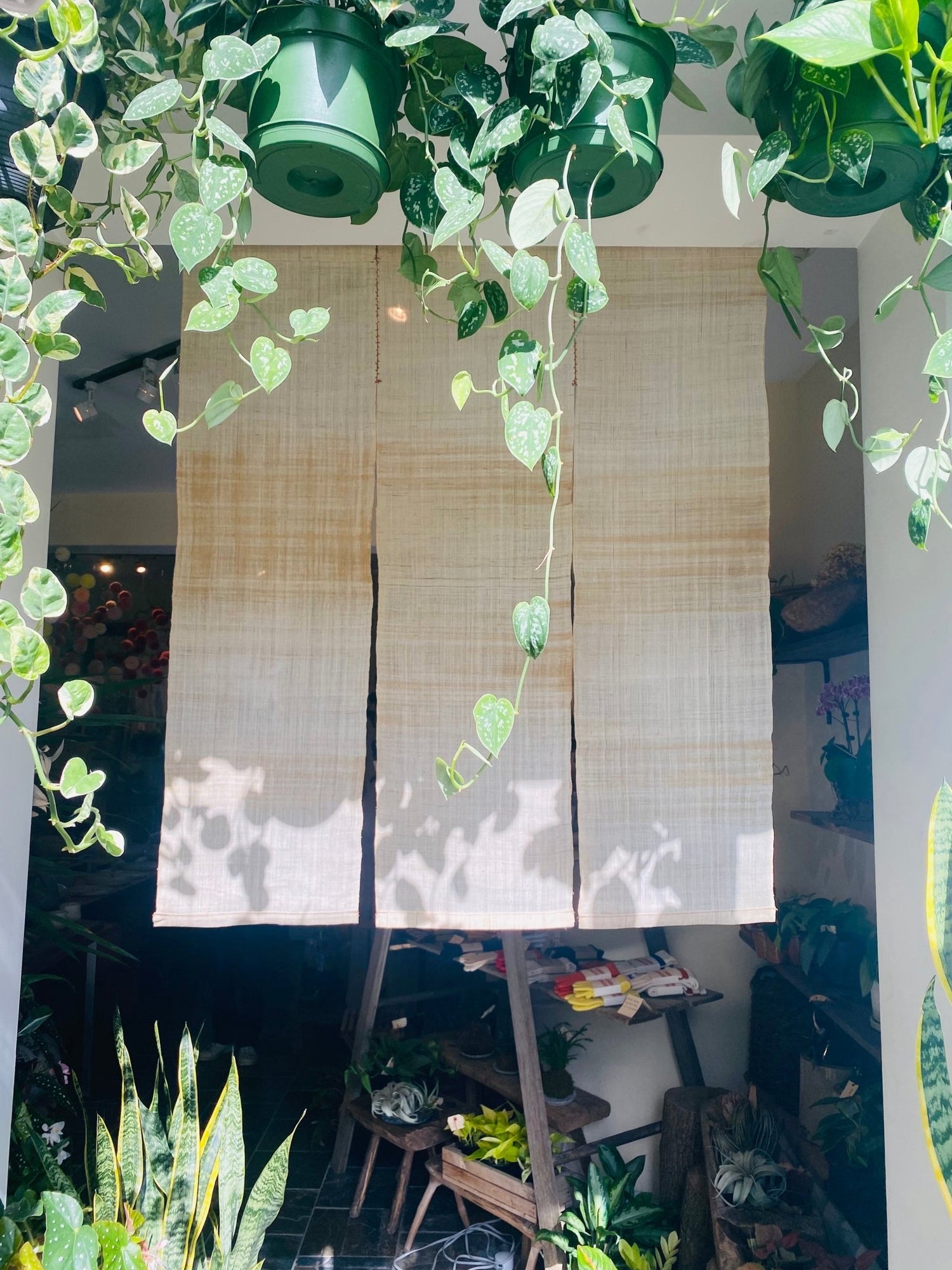The summer has passed, and you can feel the signs of autumn approaching. When I lived in the countryside in Japan, I could feel the changing seasons through activities like rice planting, harvesting, and watching the autumn leaves. I remember how the journey back from firing the wood kiln would soothe my tired body and mind. In the city, I sense the seasons through the street trees, flowers in gardens, the wind, the daylight hours, and people’s clothing. The conversations around me are filled with summer memories, and while I find happiness in these moments, I also feel a touch of sadness as the brief summer comes to an end.
During the summer, while local customers tend to go on vacation and visit the store less frequently, we see an increase in tourists. Many of them purchase pottery as souvenirs from their trips, and I feel that the recent popularity of pottery is still going strong.
In July, we held a sake tasting workshop with Mariko from Hakko Gakko and Nancy Matsumoto, the author of Exploring the World of Japanese Craft Sake. Their knowledge and experience were remarkable, and the event was very well-received. I created four different shapes of cups for the event so that participants could enjoy how the shape of the cup affects the taste.

(Sake tasting workshop at MIKA)
I also brought a set of 10 Bizen ware cups that were a gift from my pottery friends when I left Japan. I wanted the participants to not only experience the differences in shape but also in material. Bizen ware is a traditional Japanese pottery that is fired without glaze, offering a unique texture and flavor. The surface is covered with small bumps due to the absence of glaze, which can affect the aroma and taste, making it seem less pronounced compared to glass or porcelain. This characteristic can be both an advantage and a disadvantage, but the texture of the unglazed surface is rich in variation and very appealing.
Interestingly, many participants initially savored the sake in porcelain cups, but as the event progressed, they began to prefer the Bizen ware, even though the aroma and taste were subtler. I believe they were enjoying the visual change in how the sake was presented after having appreciated the taste. When I asked them which sake cup they liked best towards the end of the event, they responded with, “The Bizen ware looks cool,” prioritizing the visual appeal.
It is well known that the taste of sake or tea can change depending on the cup used, but seeing people enjoy the same sake for longer by changing the cups, and watching their conversations flow, brought me indescribable joy.
It is said that changing the dishes used to serve food can alter our perception of taste through visual changes, even if the dishes themselves don’t come into direct contact with our mouths. I am amazed by how sensitive and delicate our senses are.
In Japanese cuisine, it has long been a tradition to change the dishes with the seasons. There are many dish shapes, such as those resembling fish or gourds, or lidded bowls, that are rarely seen in other countries. These are designed to enhance the experience of taste through visual and olfactory enjoyment, as well as to express the seasons.

(Tableware ordered by Japan from China (during the late Ming to early Qing Dynasty) in the Edo period.)
Recently, I’ve noticed on social media that many restaurants in Toronto are also enjoying working with local potters to create unique dishes, and I’m fortunate to receive orders as well. However, I think this poses quite a risk for restaurants. Dishes can chip, break, and unusual shapes can be difficult to store. The kitchens, which I sometimes get a glimpse of, are quite hectic, very different from the dining area where we sit, and I can imagine there’s little room to be mindful of the dishes. Despite this, I have nothing but respect for the restaurants that place orders, and I always strive to deliver the best products possible.
In Japan, unlike in the West, paintings and sculptures have not developed independently but have evolved as part of the decor in daily life. Dynamic landscapes or mythical creatures are painted on sliding doors, the seasons are expressed through kimono, and the outside scenery is depicted on dishes.
As I mentioned earlier, Japanese culture has long embraced craftsmanship, nurturing ideas and expressions through various crafts. Until a while ago, this passion was mainly directed towards tea utensils, dishes for Japanese cuisine, flower vases for ikebana, and high-end furniture. However, recently, more young artists are pouring their passion into everyday dishes. This trend is spreading not just in Japan but globally, and I hope people will take notice.
Many of these dishes are not designed with functionality in mind—they often aren’t dishwasher or microwave safe and can be inconvenient. But now that we live in a time of abundance, I think it’s a good moment to embrace and enjoy these inconveniences.
I don’t have any specific plans yet, but I would love to collaborate with a restaurant on a dishware event. To make it happen, I still need to work on the budget, planning skills, dishware ideas, connections, and my English proficiency, but I think it would be something really interesting. When the time comes, I hope you will join us at the event!
Also, a Japanese pottery friend of mine recently acquired a wood-fired kiln, and we’re planning to make some dishes together. While Bizen ware will be the focus, I hope to gradually incorporate other techniques and broaden our range, so please look forward to it!

(Wood-fired kiln for Bizen ware)
The beautiful collection at the Gardiner Museum in Toronto.
A magnificent collection of Imari ware at the Kyushu Ceramic Museum: The Shibata Collection





